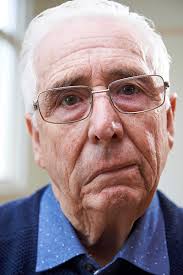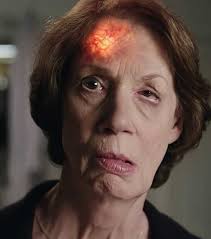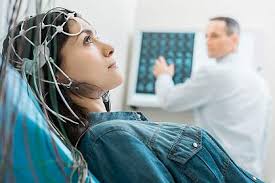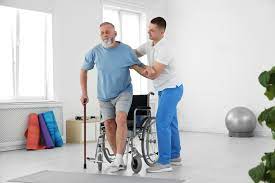From Sudden Weakness to Confusion: Key Stroke Symptoms to Watch For
A stroke is a medical emergency that occurs when the blood supply to part of the brain is interrupted or severely reduced, depriving it of oxygen and nutrients. This can cause permanent brain damage, long-term disability, or even death. Strokes can be caused by either a blocked artery (ischemic stroke) or the leaking or bursting of a blood vessel (hemorrhagic stroke). Signs and symptoms of a stroke vary depending on the type, but may include sudden numbness in the face, arm or leg; confusion; difficulty speaking; difficulty seeing in one or both eyes; dizziness; loss of balance or coordination; and severe headache. If someone experiences any of these symptoms, they should seek medical attention right away as early treatment can help reduce lasting effects. Please keep reading for details on the following topics:
Signs and symptoms of a stroke
Causes of stroke
Risks of stroke
Types of stroke
How to prevent stroke
Complications of stroke
Diagnosis of stroke
Recovery from a stroke
Signs of bleeding
Treatment of stroke
When to seek urgent medical care

SIGNS AND SYMPTOMS OF A STROKE
If you experience any of the following symptoms, you should seek medical help immediately. If you have any doubts about whether you should seek medical care, it is always better to err on the side of caution and consult with your doctor. The signs and symptoms of a stroke encompass a range of neurological manifestations, including:
- Confusion: Disorientation or mental fog.
- Slurred speech: Difficulty articulating words clearly.
- Difficulty speaking or understanding: Trouble communicating or comprehending language.
- Numbness or paralysis of the face and limbs: Loss of sensation or movement, typically on one side of the body.
- Facial droop: Asymmetrical facial expression due to muscle weakness or paralysis.
- Severe headache: Intense, sudden head pain, often described as the worst headache ever experienced.
- Difficulty with vision: Blurred or impaired vision in one or both eyes.
- Loss of balance: Impaired coordination or equilibrium.
- Dizziness: Sensation of lightheadedness or spinning.
- Sagging of one side of the face: Uneven facial features due to muscle weakness or paralysis.
- Inability to raise both arms together: Difficulty lifting both arms simultaneously, often due to muscle weakness or paralysis.
- Mumbling upon speaking: Difficulty enunciating words clearly, leading to unclear speech patterns.

CAUSES OF STROKE
There are primarily two types of stroke:
- Ischemic stroke: This occurs when a blood clot obstructs or blocks a blood vessel supplying blood to the brain. Ischemic strokes are the most common type, accounting for approximately 87% of all strokes. Subtypes of ischemic stroke include thrombotic stroke, where a clot forms within an artery supplying blood to the brain, and embolic stroke, where a clot forms elsewhere in the body and travels to the brain, causing a blockage.
-
Hemorrhagic stroke: This occurs when a weakened blood vessel in the brain ruptures or leaks, leading to bleeding within or around the brain tissue. Hemorrhagic strokes are less common but often more severe and can result in significant brain damage or even death. Subtypes of hemorrhagic stroke include intracerebral hemorrhage, where bleeding occurs within the brain tissue, and subarachnoid hemorrhage, where bleeding occurs in the space between the brain and the surrounding membrane.
Several factors increase the risk of stroke, including:
- Lifestyle risk factors:
- Being overweight or obese
- Physical inactivity
- Heavy or binge drinking
- Use of illegal drugs such as cocaine and methamphetamine
- Medical risk factors:
- High blood pressure (hypertension)
- Cigarette smoking or exposure to secondhand smoke
- High cholesterol levels
- Diabetes
- Obstructive sleep apnea
- Cardiovascular diseases, including heart failure, heart defects, heart infection, or irregular heart rhythm (e.g., atrial fibrillation)
- Personal or family history of stroke, heart attack, or transient ischemic attack (TIA)
- COVID-19 infection
-
Other risk factors:
- Age: People aged 55 or older have a higher risk of stroke.
- Race or ethnicity: African Americans and Hispanics have a higher risk of stroke compared to other racial or ethnic groups.
- Sex: Men have a higher risk of stroke than women, though women tend to be older when they experience strokes and are more likely to die from strokes.
- Hormonal factors: Use of birth control pills or hormone therapies containing estrogen increases the risk of stroke.
HOW TO PREVENT A STROKE
Preventing a stroke involves adopting healthy lifestyle habits and managing risk factors. Here are some strategies to help prevent stroke:
- Maintain a healthy diet: Consume plenty of fruits, vegetables, whole grains, and lean proteins. Limit saturated fats, trans fats, cholesterol, and sodium intake.
- Manage weight: Maintain a healthy weight through a balanced diet and regular physical activity to reduce the risk of obesity and associated health issues.
- Exercise regularly: Engage in moderate-intensity aerobic exercise for at least 150 minutes per week, along with muscle-strengthening activities on two or more days per week.
- Quit smoking: Smoking increases the risk of stroke and other cardiovascular diseases. Seek support and resources to quit smoking if necessary.
- Limit alcohol consumption: If you drink alcohol, do so in moderation. Limit intake to no more than one drink per day for women and two drinks per day for men.
- Control blood pressure: Monitor blood pressure regularly and take steps to keep it within a healthy range. This may include medication, lifestyle modifications, and stress management techniques.
- Manage cholesterol levels: Keep cholesterol levels in check by eating a healthy diet, exercising regularly, and, if necessary, taking medication as prescribed by a healthcare provider.
- Manage diabetes: Maintain blood sugar levels within the target range through diet, exercise, medication, and regular monitoring.
- Treat atrial fibrillation: If diagnosed with atrial fibrillation, follow treatment recommendations to reduce the risk of blood clots and stroke.
- Control other medical conditions: Manage other medical conditions such as obstructive sleep apnea, heart disease, and peripheral artery disease to lower the risk of stroke.
- Seek regular medical care: Schedule regular check-ups with a healthcare provider to monitor overall health, assess risk factors, and receive appropriate screenings and preventive care.
-
Be aware of stroke symptoms: Learn to recognize the signs and symptoms of stroke and act quickly by seeking emergency medical attention if they occur. Remember the acronym FAST: Face drooping, Arm weakness, Speech difficulty, Time to call emergency services.
COMPLICATIONS OF A STROKE
It is important to know when to seek urgent medical care, as delaying appropriate treatment can lead to further health complications. If you experience any of the following symptoms, you should seek medical help immediately. If you have any doubts about whether you should seek medical care, it is always better to err on the side of caution and consult with your doctor. Complications that can arise after a stroke include:
- Paralysis or loss of muscle movement: Stroke can cause muscle weakness or paralysis on one side of the body, leading to difficulty with movement and activities of daily living.
- Difficulty speaking or swallowing: Some stroke survivors may experience aphasia, a language disorder that impairs the ability to speak, understand, read, or write. Swallowing difficulties, known as dysphagia, can also occur, increasing the risk of choking or aspiration pneumonia.
- Amnesia: Memory problems or amnesia may develop after a stroke, affecting short-term or long-term memory recall.
- Emotional changes: Stroke survivors may experience emotional changes such as depression, anxiety, irritability, or mood swings, which can impact their quality of life and recovery.
- Pain and numbness: Persistent pain or numbness in the affected areas of the body may occur after a stroke, contributing to discomfort and reduced mobility.
- Social withdrawal: Stroke survivors may withdraw from social interactions and activities due to physical or cognitive impairments, leading to feelings of isolation and loneliness.
- Blood clots: Immobility after a stroke increases the risk of developing blood clots in the legs, known as deep vein thrombosis (DVT), which can lead to serious complications such as pulmonary embolism if a clot travels to the lungs.
- Loss of bladder or bowel control: Damage to the brain areas controlling bladder and bowel function can result in urinary or fecal incontinence, requiring management strategies and assistance with personal care.
- Osteoporosis: Reduced mobility and muscle weakness after a stroke can lead to decreased bone density and increased risk of fractures due to osteoporosis.
- Sensory impairments: Stroke survivors may experience sensory impairments such as loss of vision, hearing, or touch, affecting their ability to perceive and interact with the environment.
- Muscle weakness and falls: Weakness in the affected limbs and impaired balance increase the risk of falls, which can result in further injury or complications.
- Cognitive decline: Some stroke survivors may develop cognitive impairment or dementia over time, affecting memory, reasoning, judgment, and other cognitive functions.
- Seizures: Stroke survivors may experience seizures, especially in the acute phase following a stroke or as a long-term complication.
- Swelling in the brain: Swelling or edema in the brain tissue may occur following a stroke, leading to increased intracranial pressure and potential complications if not managed promptly.

HOW A STROKE IS DIAGNOSED
A stroke is diagnosed through a combination of medical history, physical examination, and diagnostic tests. Here’s how a stroke is typically diagnosed:
- Medical history: The healthcare provider will review the patient’s medical history, including any risk factors for stroke, symptoms experienced, and previous medical conditions.
- Physical examination: The healthcare provider will conduct a physical examination to assess neurological function, including testing muscle strength, coordination, reflexes, and sensation. They will also evaluate vital signs such as blood pressure, heart rate, and temperature.
- Neurological assessment: The healthcare provider will perform a focused neurological assessment to identify signs and symptoms consistent with a stroke, such as weakness or paralysis on one side of the body, slurred speech, or visual disturbances.
- Imaging tests: Diagnostic imaging tests are essential for confirming the diagnosis of a stroke and determining its type and severity. These may include:
- Computed tomography (CT) scan: This imaging test can quickly identify bleeding in the brain (hemorrhagic stroke) or areas of brain tissue damage (ischemic stroke). It is often the first-line diagnostic test performed in suspected stroke cases due to its rapid availability and sensitivity to acute changes in brain tissue.
- Magnetic resonance imaging (MRI) scan: MRI provides detailed images of the brain, allowing healthcare providers to visualize ischemic strokes, hemorrhagic strokes, and other abnormalities with high resolution. It may be performed following a CT scan for further evaluation or in cases where a stroke is suspected but not immediately evident on CT.
- Blood tests: Blood tests may be conducted to evaluate blood glucose levels, electrolyte levels, coagulation parameters, and other laboratory values. These tests help assess stroke risk factors, rule out other medical conditions, and guide treatment decisions.
- Electrocardiogram (EKG or ECG): An EKG measures the electrical activity of the heart and can detect irregular heart rhythms (arrhythmias) that may increase the risk of stroke, such as atrial fibrillation.
- Carotid ultrasound: This non-invasive imaging test uses sound waves to assess blood flow in the carotid arteries, which supply blood to the brain. It helps identify blockages or narrowing (stenosis) in the carotid arteries that may increase the risk of stroke.
-
Lumbar puncture (spinal tap): In some cases, a lumbar puncture may be performed to analyze cerebrospinal fluid for signs of bleeding or infection, particularly if subarachnoid hemorrhage or meningitis is suspected.
STEPS TO RECOVERY FROM A STROKE

Recovery from a stroke is a gradual process that involves various steps and interventions to optimize physical, cognitive, and emotional function. Here are steps to aid in the recovery process:
- Medical care: Receive prompt medical attention and acute care following a stroke to stabilize vital signs, manage complications, and prevent further brain damage.
- Rehabilitation: Participate in comprehensive rehabilitation programs tailored to individual needs, which may include:
- Physical therapy: Focuses on improving mobility, strength, balance, and coordination through exercises and functional activities.
- Occupational therapy: Helps regain skills for daily living activities, such as dressing, grooming, and feeding, by addressing fine motor skills, cognitive abilities, and adaptive techniques.
- Speech therapy: Addresses speech and language difficulties, swallowing problems (dysphagia), and cognitive-communication impairments through exercises, strategies, and assistive devices.
- Psychological support: Receive counseling, psychotherapy, or support groups to address emotional challenges, such as depression, anxiety, grief, or adjustment to disability.
- Recreational therapy: Engage in leisure and recreational activities adapted to individual abilities and interests to enhance social participation, cognitive function, and overall well-being.
- Medication management: Take prescribed medications as directed by healthcare providers to manage stroke-related complications, prevent recurrent strokes, and control risk factors such as high blood pressure, high cholesterol, diabetes, and atrial fibrillation.
- Healthy lifestyle: Adopt healthy habits to promote recovery and reduce the risk of future strokes, including:
- Following a nutritious diet rich in fruits, vegetables, whole grains, lean proteins, and healthy fats, and limiting sodium, saturated fats, and added sugars.
- Engaging in regular physical activity, as tolerated, to improve cardiovascular fitness, strength, and flexibility.
- Avoiding tobacco products and excessive alcohol consumption.
- Maintaining a healthy weight through balanced nutrition and physical activity.
- Managing stress through relaxation techniques, mindfulness, and social support.
- Safety precautions: Implement safety measures at home to prevent falls, accidents, and injuries, such as removing tripping hazards, installing grab bars and handrails, using assistive devices (e.g., walkers, canes), and modifying the environment for accessibility.
- Follow-up care: Attend follow-up appointments with healthcare providers for ongoing monitoring, evaluation, and adjustments to treatment and rehabilitation plans as needed. Stay informed about stroke prevention strategies and adhere to recommended lifestyle modifications and medication regimens.
-
Patient and caregiver education: Learn about stroke recovery, potential complications, warning signs of recurrent strokes, and strategies for optimizing recovery and quality of life. Engage caregivers in education and support to enhance the care and well-being of stroke survivors.
TREATMENT FOR STROKE
Treatment for stroke depends on the type of stroke (ischemic or hemorrhagic) and its severity. Here are common treatment approaches:
- Ischemic Stroke:
- Clot-busting medication (Thrombolytics): Tissue plasminogen activator (tPA) is a medication that can dissolve blood clots and restore blood flow to the brain if administered within a specific time frame after the onset of symptoms.
- Mechanical thrombectomy: In cases where tPA is not feasible or effective, or for large vessel occlusions, a catheter-based procedure may be performed to physically remove the clot from the blocked artery.
- Hemorrhagic Stroke:
- Surgical intervention: If the bleeding is severe or life-threatening, surgical procedures such as aneurysm clipping, coiling, or arteriovenous malformation (AVM) removal may be necessary to stop the bleeding and repair the blood vessel.
- Medication: Certain medications may be administered to manage symptoms, reduce bleeding, and prevent complications. These may include anticoagulants, anticonvulsants, or medications to lower blood pressure.
- Supportive Care:
- Monitoring: Continuous monitoring of vital signs, neurological status, and other parameters to assess the patient’s condition and response to treatment.
- Oxygen therapy: Administering supplemental oxygen to maintain adequate oxygenation of tissues and organs.
- Fluids and nutrition: Intravenous fluids and nutrition may be provided to maintain hydration, electrolyte balance, and nutritional status.
- Pain management: Medications may be given to alleviate pain and discomfort associated with stroke or related procedures.
- Seizure management: Anticonvulsant medications may be prescribed to prevent or control seizures, which can occur after a stroke.
- Rehabilitation:
- Following the acute phase of stroke treatment, rehabilitation plays a crucial role in promoting recovery and maximizing functional independence. Rehabilitation services may include physical therapy, occupational therapy, speech therapy, and cognitive rehabilitation to address motor deficits, activities of daily living, communication difficulties, and cognitive impairments.
- Secondary Prevention:
- Once stabilized, stroke survivors receive ongoing management to prevent future strokes and manage risk factors. This may include medications to control blood pressure, cholesterol, diabetes, and atrial fibrillation, as well as lifestyle modifications such as dietary changes, exercise, smoking cessation, and weight management.
WHEN TO SEEK URGENT MEDICAL CARE
It is crucial to seek urgent medical care if you or someone else experiences symptoms of a stroke or other medical emergencies. If you have any doubts about whether you should seek medical care, it is always better to err on the side of caution and consult with your doctor. Here are the key signs indicating the need for immediate medical attention:
- Sudden weakness or numbness: Especially on one side of the body, such as in the face, arm, or leg. This may manifest as drooping of the face, inability to lift one arm, or difficulty walking.
- Difficulty speaking or understanding: Slurred speech, difficulty finding words, or inability to comprehend spoken language.
- Vision problems: Sudden blurred vision, double vision, or loss of vision in one or both eyes.
- Severe headache: A sudden, severe headache, often described as the worst headache ever experienced, especially if it comes on abruptly and is accompanied by other symptoms.
- Loss of balance or coordination: Sudden dizziness, loss of balance, or difficulty walking, especially if not explained by other factors.
- Facial drooping: One side of the face drooping or feeling numb, particularly when attempting to smile.
- Confusion or altered mental status: Sudden confusion, disorientation, or changes in consciousness.
- Difficulty swallowing: Trouble swallowing, especially if accompanied by other stroke symptoms.
If you or someone else experiences any of these symptoms, it is essential to call emergency services immediately and seek urgent medical attention. Time is of the essence in stroke treatment, and early intervention can significantly improve outcomes and reduce the risk of long-term disability or death. Do not wait to see if symptoms improve on their own, as prompt medical care is critical for stroke and other medical emergencies.
Disclaimer: The information provided in this content is for general informational purposes only. It is not intended as medical or healthcare advice, diagnosis, or treatment. Always seek the advice of a qualified healthcare professional with any questions you may have regarding a medical condition or healthcare decisions.

